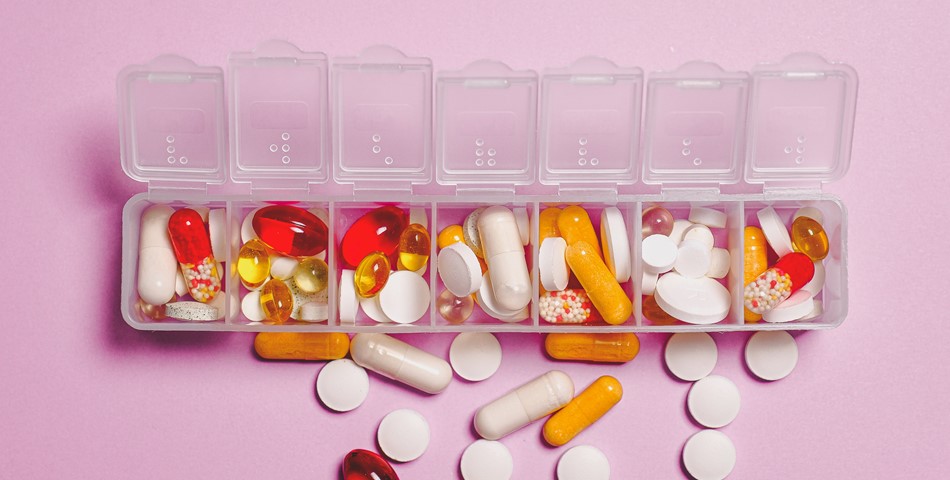What vitamins should you take daily?
It is estimated that about half of American adults take some type of vitamin or mineral supplement.
“People might take supplements if they know they’re missing a certain food group,” says Patton. “Others might take supplements for the antioxidant benefits or because they know they don’t eat fruits and vegetables. Some people may have a true deficiency.”
Everyone’s vitamin needs are different, so it’s a good idea to talk to your doctor or registered dietitian before starting to take supplements. They can help you decide which products to take, or if you need to take any at all. Your doctor and pharmacist can also tell you if a supplement would interact badly with any medications you are taking, which may cause health problems.
What does recommended daily allowance mean?
The recommended daily allowance (RDA) for vitamins and minerals is the average daily intake a person needs to avoid deficiencies and stay healthy. Men and women often have different vitamin and mineral recommendations.
There are different ways to measure the RDA. Vitamins and minerals that are needed in larger doses are measured in milligrams and those that the body needs less of are measured in micrograms. There are 1,000 micrograms in 1 milligram. Each vitamin and mineral has a specific RDA.
Vitamins and their benefits
Here’s what vitamins and minerals you should consider taking.
Vitamin A
Vitamin A is a fat-soluble vitamin also known as retinol. The RDA of vitamin A is 700 micrograms for women and 900 micrograms for men. Vitamin A is in many dairy products and yellow- or orange-colored fruits and vegetables.
“Fruits like cantaloupe, mangoes and apricots are good options,” says Patton.
Vitamin B
There are eight B vitamins, which make up vitamin B complex, with varying RDAs. According to the United States Department of Agriculture (USDA), most Americans don’t get their RDA of B vitamins in their daily nutrition.
In the U.S., many cereals, flour, breads and pastas are routinely fortified with B vitamins to minimize the risk of deficiency. B vitamins are in leafy green vegetables, animal proteins and whole grains.
“The majority of B vitamins are used to turn food into energy,” says Patton. “And also used a lot for growth, development and the creation of cells.”
Vitamin C
Vitamin C is a water-soluble vitamin containing antioxidants that promote healthy tissue growth. The RDA for men is 90 milligrams and 75 milligrams for women. Vitamin C can be found in many fruits and vegetables.
“Vitamin C helps protect your cells from the damage of free radicals,” says Patton. “It’s also used to help make collagen in your bodies.”
Vitamin D
Vitamin D is an essential fat-soluble vitamin that is activated by ultraviolet (UV) light. Besides getting from sun exposure, vitamin D can also be found in cod liver oil, fatty fish, fortified juices, milk and cereals. These can be a healthy alternative when a person does not get enough UV light. For children and adults, the RDA is 15 micrograms (600 IU). For ages 70 and older it is 20 micrograms (800 IU).
“Vitamin D deficiencies are pretty common,” says Patton. “Doctors may test your vitamin D levels and sometimes they are low enough that people need a prescription-strength dose of vitamin D.”
Vitamin E
Vitamin E is an important vitamin for organ function. You should get 15 milligrams daily. Sources of vitamin E include vegetable oils, avocados, spinach, seeds and nuts, and whole grains.
“Vitamin E has the antioxidant benefits of keeping your immune system strong, but also can help with dilating blood vessels and preventing blood clots,” says Patton.
Vitamin K
Vitamin K is essential for blood clotting. The RDA of vitamin K is 120 micrograms for men and 90 micrograms for women. This protein-rich vitamin is mainly found in leafy green vegetables.
“Vitamin K also plays a role with calcium in keeping your bones really healthy,” says Patton.
Calcium
Calcium is a mineral needed for healthy bone growth. The RDA of calcium is 1,000 milligrams for men and women ages 19 to 51; for women 51 and older and for men older than 70, it increases to 1,200 milligrams per day. Most dairy products like milk, cheese and yogurt are good sources of calcium. Tofu, spinach, soy and rhubarb are also high in calcium.
“But it also plays a role in muscle function and is necessary for nerves to carry messages from your brain to your body,” says Patton.
Iron
Iron helps transport oxygen in blood. Not enough iron may result in a weak immune system and fatigue. Men and women should consume between 8 to 18 milligrams of iron daily. Iron is found in red meats, leafy green vegetables and legumes.
“For anybody who is vegetarian or vegan, they’re at risk for having an iron deficiency,” says Patton. “While there are a lot of plant-based sources of iron, you just don’t absorb it as well. The amount of fiber in a vegetarian or vegan diet can block iron.”
Zinc
Zinc is only needed in small amounts. The RDA for men is 11 milligrams and 8 milligrams for women. Red meat and poultry are good sources of zinc, as are beans, nuts and whole grains.
“Zinc helps boost your immune system and possibly prevent infection like pneumonia,” says Patton.











